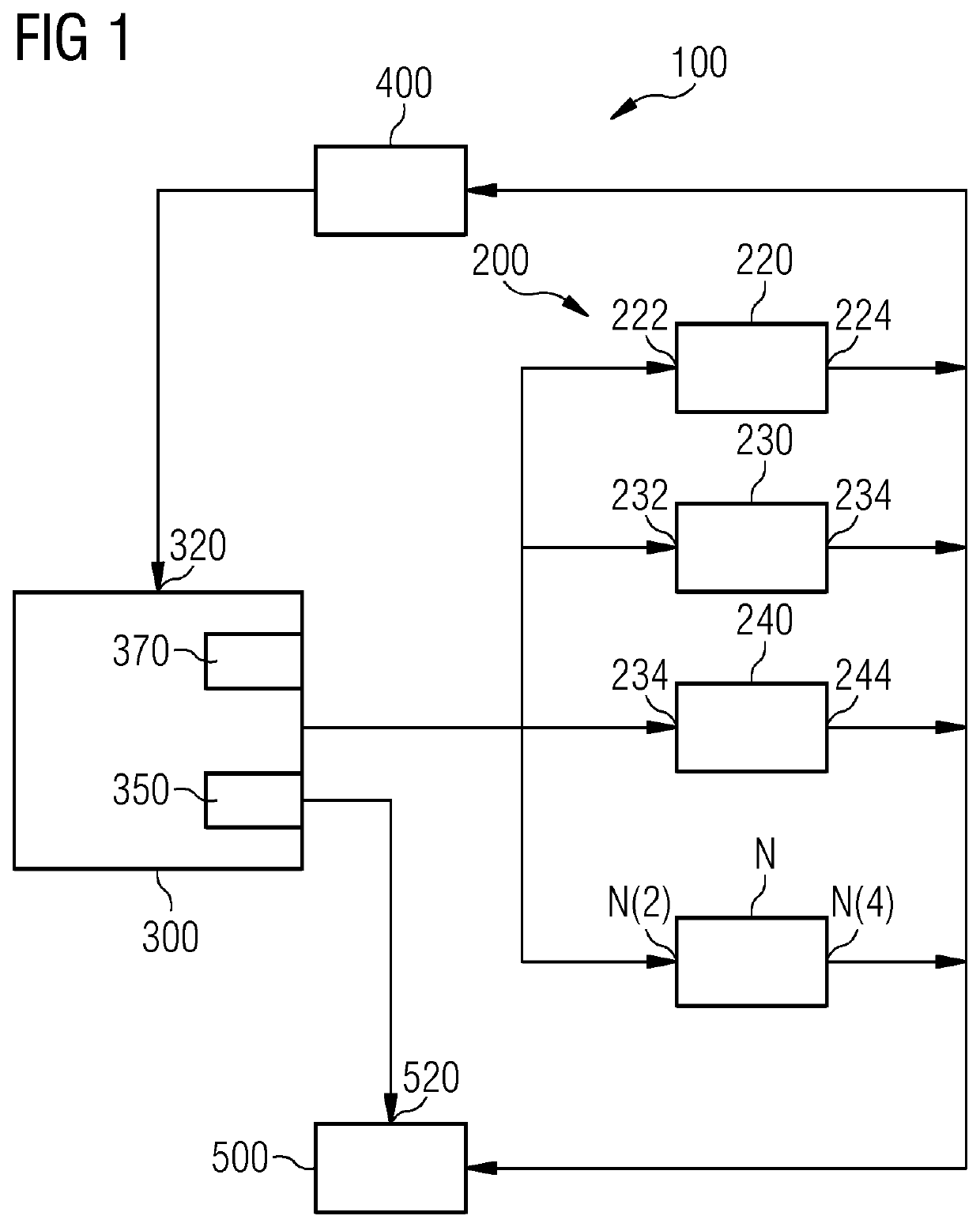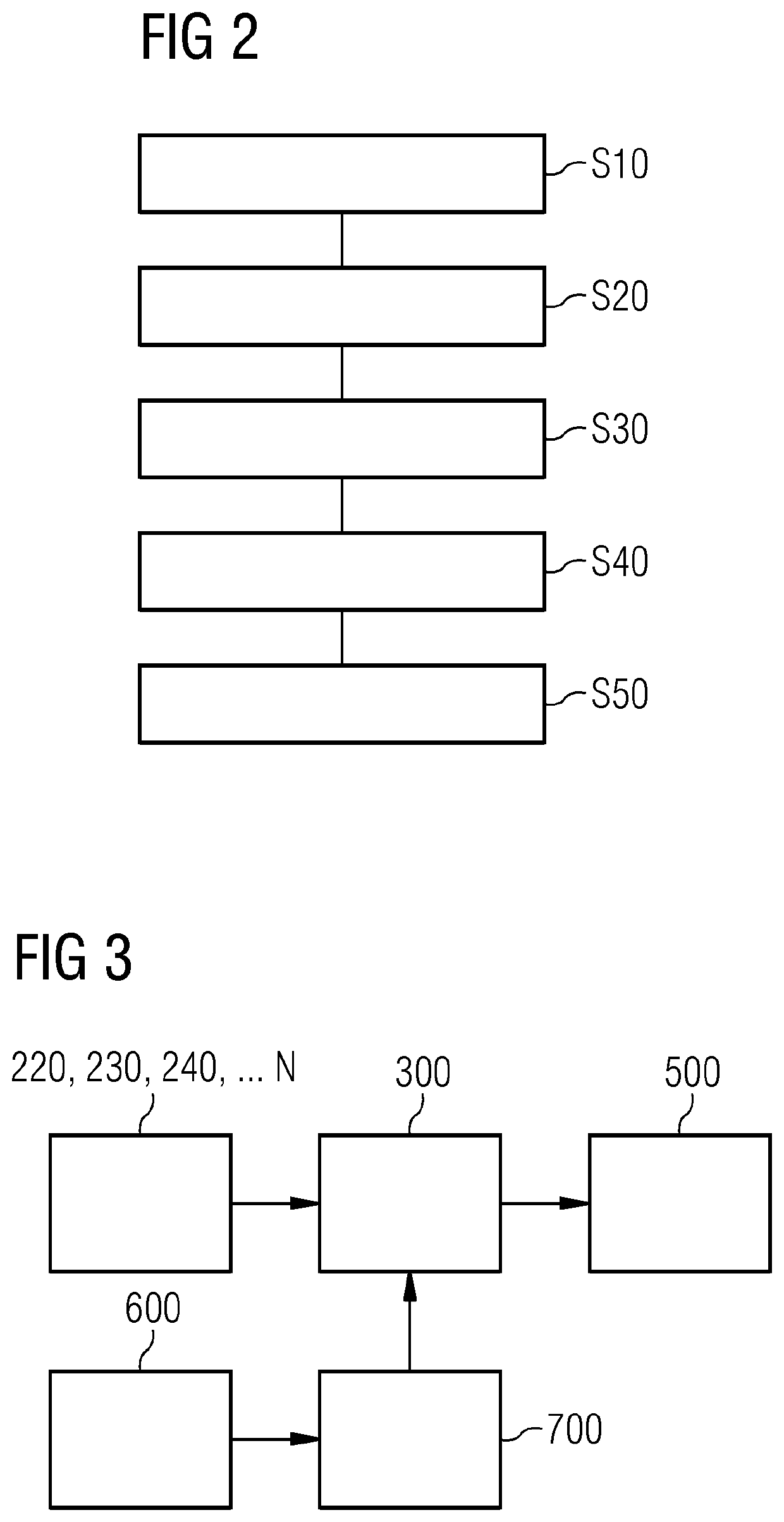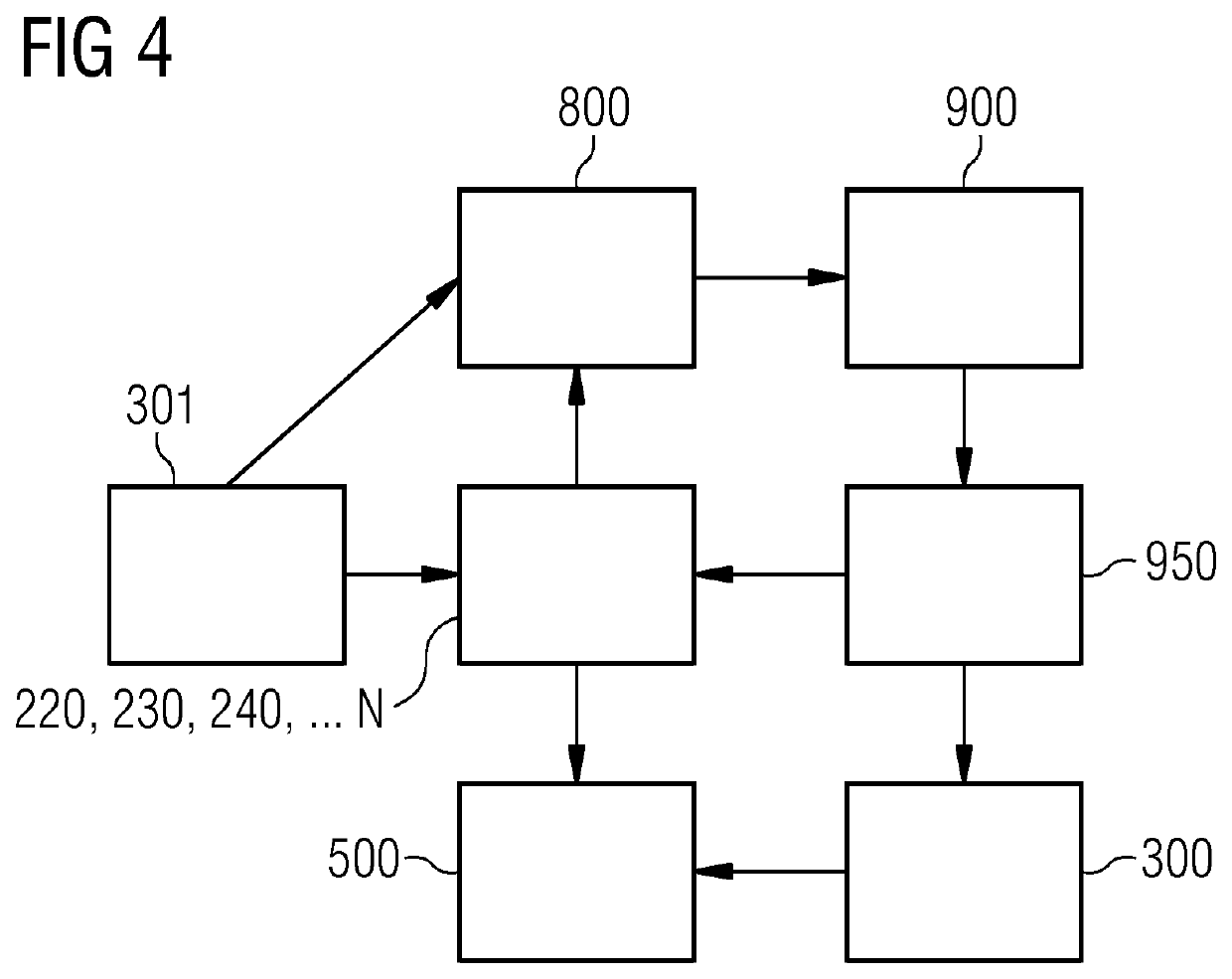System for controlling and monitoring adaptive cyberphysical systems
a cyberphysical system and adaptive technology, applied in the field of adaptive cyberphysical systems, can solve the problems of high complexity, insufficient practice of existing protective measures and conventional it security concepts, and inability to create full functionalities,
- Summary
- Abstract
- Description
- Claims
- Application Information
AI Technical Summary
Benefits of technology
Problems solved by technology
Method used
Image
Examples
Embodiment Construction
[0049]FIG. 1 shows a system 100 for monitoring and controlling an adaptive system 200 having the components 220, 230, 240, . . . N. The components 220, 230, 240, . . . N of the adaptive system 200 have interfaces 222, 232, 242, . . . N(2) that connect it to the engineering system 300 for data transmission purposes. By virtue of the interfaces 222, 322, 242, . . . N(2), the necessary infrastructure and configuration is ensured in the components 220, 230, 240, . . . N. A monitoring and supervision module 400 is likewise connected via interfaces 224, 234, 244, . . . N(4) to the components 220, 230, 240, . . . N of the adaptive system 200 and receives, from the components 220, 230, 240 . . . N, data containing information about the operating state, learned behavior, the respective configuration and planning scenarios of the components 220, 230, 240 . . . N. The monitoring and supervision module 400 is connected to the engineering system 300 via an interface 320 and forwards the compiled...
PUM
 Login to View More
Login to View More Abstract
Description
Claims
Application Information
 Login to View More
Login to View More - R&D
- Intellectual Property
- Life Sciences
- Materials
- Tech Scout
- Unparalleled Data Quality
- Higher Quality Content
- 60% Fewer Hallucinations
Browse by: Latest US Patents, China's latest patents, Technical Efficacy Thesaurus, Application Domain, Technology Topic, Popular Technical Reports.
© 2025 PatSnap. All rights reserved.Legal|Privacy policy|Modern Slavery Act Transparency Statement|Sitemap|About US| Contact US: help@patsnap.com



